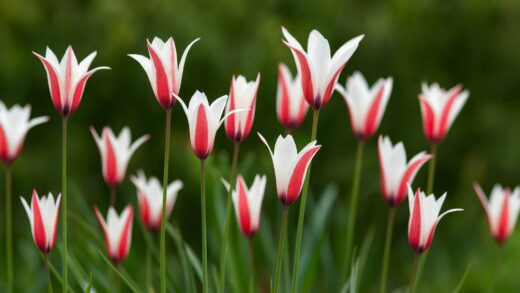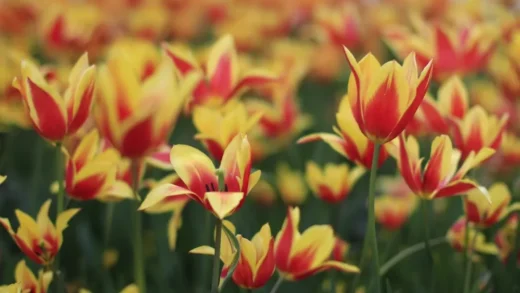The Mandevilla sanderi, commonly known as brazilian jasmine, is a truly captivating climbing plant that can bring a touch of the tropics to any garden or balcony with its stunning, trumpet-shaped flowers and lush, glossy foliage. Originating from the vibrant landscapes of Brazil, this plant has deservedly become a favorite among gardeners for its vigorous growth and profuse blooming throughout the warmer months. Proper care is paramount to unlocking its full potential, ensuring a continuous display of color from late spring until the first frosts. Understanding its fundamental needs, from sunlight exposure to soil composition, forms the very foundation of successful cultivation, transforming a simple plant into a breathtaking feature of your outdoor space. This involves a commitment to providing the right environment, which closely mimics its native habitat, a task that rewards the diligent gardener with unparalleled beauty and a sense of accomplishment.
Appreciating the natural habitat of the Mandevilla is the first step towards providing it with an environment where it can truly thrive. These plants are accustomed to the warm, humid conditions of South American forests, where they climb towards the sunlight, using other plants for support. Therefore, replicating these conditions as closely as possible is the key to a healthy and floriferous specimen. This means selecting a location that receives plenty of bright, indirect sunlight, as direct, harsh afternoon sun can scorch the leaves and flowers. A spot with morning sun and afternoon shade is often ideal, providing the perfect balance of light and protection that this tropical beauty craves for optimal growth and bloom production.
Beyond just light, the structure and support you provide for your brazilian jasmine are critical components of its care regimen. As a natural climber, it possesses twining stems that will eagerly wrap around any available support, be it a trellis, an arbor, or a simple stake. Providing this support from the early stages of its growth encourages a strong and well-formed plant, preventing the stems from becoming tangled and promoting better air circulation, which is vital for disease prevention. Regularly guiding the new shoots onto the support system will help to create a dense and attractive display, showcasing the magnificent flowers against the backdrop of its deep green leaves, creating a living work of art.
Furthermore, creating the right microclimate can significantly impact the plant’s overall health and vitality. While Mandevilla appreciates warmth, it is also sensitive to extreme temperature fluctuations. Protecting it from strong winds is important, as they can dry out the foliage and damage the delicate flowers. If you are growing your plant in a container, this offers the flexibility of moving it to a more sheltered location during inclement weather. Additionally, maintaining a certain level of humidity around the plant, especially during dry spells, can be beneficial, often achieved by misting the leaves or placing the pot on a tray of pebbles with water, a simple technique that goes a long way.
Understanding the basics of plant health
A fundamental aspect of caring for Mandevilla sanderi involves a keen observation of the plant’s overall condition, which serves as a direct indicator of its well-being. Healthy specimens exhibit vibrant, glossy green leaves, strong stems, and a continuous production of buds and flowers throughout the growing season. Any deviation from this, such as yellowing leaves, stunted growth, or a lack of blooms, is a sign that one or more of its environmental needs are not being met. Regularly inspecting the plant allows for the early detection of potential issues, whether they stem from improper watering, nutrient deficiencies, or the onset of pests or diseases, enabling timely intervention.
More articles on this topic
The quality of the soil is a non-negotiable factor for the long-term health of your brazilian jasmine. This plant demands a well-draining, rich, and slightly acidic growing medium to flourish. A heavy, waterlogged soil will inevitably lead to root rot, one of the most common and fatal problems for container-grown plants. To prevent this, it is crucial to use a high-quality potting mix, preferably one amended with organic matter like compost or peat moss to enhance fertility, and perlite or coarse sand to improve drainage. Ensuring the container has adequate drainage holes at the bottom is just as critical, as it allows excess water to escape freely, preventing the roots from sitting in stagnant moisture.
Regular feeding is another pillar of robust plant health, especially for a vigorous and fast-growing plant like Mandevilla that expends a significant amount of energy producing its spectacular flowers. During the active growing season, from spring through to late summer, a consistent fertilization schedule is necessary to replenish the nutrients in the soil. A balanced, water-soluble fertilizer, formulated for flowering plants, applied every two to four weeks, will provide the necessary nitrogen, phosphorus, and potassium, along with essential micronutrients. This steady supply of food fuels healthy foliage growth and, most importantly, encourages the prolific blooming for which the plant is so highly prized.
Finally, proactive monitoring forms the cornerstone of maintaining a thriving brazilian jasmine. This goes beyond simply watering and feeding; it involves a more intimate connection with the plant. Take the time to examine the leaves, both top and bottom, for any signs of pests like spider mites or aphids. Check the soil moisture before watering, rather than adhering to a rigid schedule. Observe how the plant responds to its location and be prepared to make adjustments if it seems to be struggling. This attentive and responsive approach to care is what truly separates a novice gardener from an expert, ensuring your Mandevilla remains a stunning and healthy specimen for years to come.
The importance of the growing environment
The immediate environment in which a Mandevilla sanderi is grown plays a decisive role in its performance and longevity. Temperature is one of the most critical environmental factors to consider. These tropical vines thrive in warm conditions, with an ideal daytime temperature range between 21 and 29 degrees Celsius. They are not frost-tolerant and can suffer significant damage or even death if exposed to temperatures below 10 degrees Celsius. Therefore, in temperate climates, they are best grown as annuals or in containers that can be moved indoors for the winter. Selecting a warm, sheltered spot, such as against a south-facing wall, can help to create a favorable microclimate that maximizes the growing season.
More articles on this topic
Air circulation is another often-overlooked environmental factor that is crucial for preventing fungal diseases. Stagnant, humid air can create the perfect breeding ground for issues like powdery mildew, which can quickly disfigure the leaves and weaken the plant. While the plant appreciates humidity, good air movement helps to keep the foliage dry. This is why providing a trellis or other support structure is so beneficial; it lifts the plant up, separating the stems and leaves and allowing air to flow freely through the canopy. When growing multiple plants, ensure there is adequate spacing between them to avoid overcrowding, which can further impede airflow and increase the risk of disease transmission.
The choice of container is also a significant part of the growing environment for potted Mandevilla. The pot must not only be large enough to accommodate the plant’s robust root system but also be made of a material that suits your climate and watering habits. Terracotta pots are porous, which allows for better soil aeration and helps prevent waterlogging, but they also dry out more quickly. Plastic or glazed ceramic pots retain moisture for longer, which can be beneficial in hotter climates but may increase the risk of overwatering in cooler, wetter regions. Regardless of the material, ensure the pot is stable and won’t be easily tipped over by wind once the plant has reached a significant size and is covered in dense foliage.
Ultimately, creating a holistic and supportive environment is about synergy. It’s the interplay between adequate light, appropriate temperatures, good air circulation, and a suitable container that culminates in a thriving plant. A gardener who understands these elements can proactively manage the plant’s surroundings to mitigate stress and promote optimal health. This might involve moving a potted plant to a different location as the seasons change or providing temporary shade during an unexpected heatwave. This adaptive management of the growing environment is a hallmark of skilled horticulture and is key to enjoying the spectacular display of the brazilian jasmine year after year.
Pruning and training for optimal display
Pruning is not merely about controlling the size of the brazilian jasmine; it is a vital practice for encouraging a more robust and floriferous plant. The primary goal of pruning is to stimulate new growth, as Mandevilla flowers on the current season’s wood. A good trim in late winter or early spring, before the new growth starts, will encourage the plant to produce numerous new shoots, each of which has the potential to bear flowers. This results in a much fuller plant with a more abundant display of blooms compared to an unpruned specimen, which can become leggy and sparse over time.
Training the vine is an ongoing process that works in tandem with pruning to create an aesthetically pleasing shape. As the new stems grow, they should be gently guided and tied onto the support structure. This prevents the plant from becoming a tangled mass and allows you to dictate its form, whether you want it to cover a trellis, frame a doorway, or climb an obelisk. Using soft plant ties is important to avoid damaging the tender stems. By carefully arranging the main stems, you can ensure that sunlight and air reach all parts of the plant, promoting even growth and flowering all over, not just at the top.
A specific pruning technique that yields excellent results is pinching back the growing tips during the early part of the growing season. This simple act of removing the very end of a young stem encourages the plant to branch out from the nodes just below the cut. Instead of one long stem, you will get two or more, effectively doubling the number of potential flowering points. This practice, performed several times before mid-summer, leads to a much denser and more compact plant, absolutely laden with flowers. It’s a small effort that pays huge dividends in the overall floral display.
It is also important to remove any dead, damaged, or weak-looking stems as you see them throughout the year. This type of maintenance pruning, often called ‘deadheading’ when applied to spent flowers, not only improves the plant’s appearance but also directs its energy towards producing new growth and more blooms rather than sustaining unproductive parts or developing seeds. Keeping the plant clean and tidy also helps to improve air circulation and reduce the potential hiding places for pests, contributing to the overall health and vigor of your prized brazilian jasmine. This continuous attention to shaping and cleaning is what elevates a plant from merely growing to truly performing.
Managing water and nutrient needs
Achieving the right balance in watering is one of the most crucial aspects of Mandevilla care. The plant prefers consistently moist soil during its active growing period but is highly susceptible to problems arising from overwatering. A reliable method is to check the top inch or two of the soil with your finger; if it feels dry to the touch, it’s time to water. Water the plant thoroughly until you see excess water draining from the bottom of the pot, which ensures that the entire root ball is hydrated. It’s then essential to allow the soil to dry out sufficiently before the next watering to prevent the roots from becoming waterlogged and developing rot.
The frequency of watering will naturally vary depending on several factors, including the size of the plant and pot, the ambient temperature, humidity levels, and the amount of sunlight it receives. During the peak of summer, when the plant is growing vigorously and temperatures are high, you may need to water it every few days. Conversely, as the weather cools in autumn, the plant’s growth will slow down, and its water requirements will decrease accordingly. It is vital to adjust your watering schedule in response to these changing conditions rather than following a rigid routine, as this is a common pitfall for many gardeners.
Proper nutrition is the fuel that powers the spectacular floral display of the brazilian jasmine. During the spring and summer, a regular feeding regimen is essential to support its rapid growth and prolific blooming. A high-quality, water-soluble fertilizer with a higher phosphorus content (the middle number in the N-P-K ratio) is often recommended to promote flower production. Applying this fertilizer at half strength every two weeks or at full strength once a month provides a steady stream of the necessary nutrients. Always water the plant before fertilizing to avoid burning the roots with concentrated fertilizer salts.
As the growing season winds down in the autumn, it’s important to taper off and eventually stop fertilizing. This signals to the plant that it’s time to slow its growth and prepare for the dormant period of winter. Continuing to feed the plant into the cooler months can encourage weak, leggy growth that is more susceptible to cold damage and pests. By carefully managing both the water and nutrient intake throughout the year, you are providing your Mandevilla with the fundamental resources it needs to not only survive but to put on a truly magnificent and long-lasting show.
Preparing for the dormant season
As autumn approaches and temperatures begin to drop, it is time to start preparing your brazilian jasmine for its winter dormancy. This is a critical phase in the plant’s annual cycle, particularly for gardeners in climates where frost is a certainty. The primary goal is to protect the plant from the cold, as it is not hardy and will not survive freezing temperatures. For those growing their Mandevilla in garden beds, this typically means treating it as an annual and replacing it the following spring. However, for container-grown plants, this is the opportunity to preserve them for the next season.
The first step in overwintering is to decide on the best location to store your plant. An ideal spot is a cool, bright area where the temperature remains consistently above 10 degrees Celsius, such as a greenhouse, a conservatory, or a bright, unheated garage or basement near a window. Before bringing the plant indoors, it is crucial to inspect it thoroughly for any pests that may be hiding on the leaves or in the soil. Pests like aphids, spider mites, and whiteflies can proliferate in the warm, dry conditions of a heated home, so it’s wise to treat the plant with an insecticidal soap or neem oil as a preventative measure.
Once you have brought the plant indoors, its care routine will change dramatically. During the winter dormant period, the Mandevilla’s growth will slow down significantly, and it may even lose some of its leaves, which is perfectly normal. Consequently, its need for water will be drastically reduced. You should allow the soil to dry out almost completely between waterings, perhaps only needing to water it lightly once every few weeks. Overwatering during dormancy is one of the most common mistakes and will almost certainly lead to root rot. Fertilizing should be stopped completely until new growth appears in the spring.
It is also advisable to prune the plant back before bringing it indoors for the winter. This not only makes the plant more manageable in size but also helps it conserve energy during the dormant period. You can cut the stems back by about one-third to one-half of their length, which will also encourage bushier growth when the plant resumes its active phase in the spring. By following these steps to prepare your Mandevilla for the dormant season, you give it the best possible chance of surviving the winter and returning with vigorous growth and a profusion of beautiful flowers the following year.



















